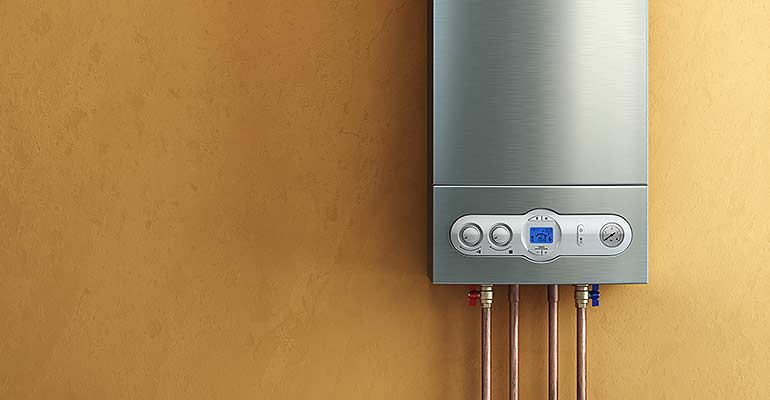Important Maintenance Tips for Your Home's Hot Water SystemEffective Techniques for Maintaining Your Home's Hot Water System
Important Maintenance Tips for Your Home's Hot Water SystemEffective Techniques for Maintaining Your Home's Hot Water System
Blog Article
Were you on the lookout for help about Tips on Maintaining a Water Heater?

Warm water is vital for day-to-day comfort, whether it's for a rejuvenating shower or washing meals. To ensure your warm water system runs successfully and lasts much longer, normal maintenance is essential. This article provides sensible suggestions and understandings on just how to preserve your home's hot water system to avoid interruptions and pricey fixings.
Introduction
Maintaining your home's warm water system could seem challenging, however with a few easy steps, you can guarantee it runs efficiently for several years to find. This guide covers everything from comprehending your hot water system to DIY upkeep ideas and understanding when to hire professional aid.
Value of Maintaining Your Warm Water System
Routine upkeep not only extends the life-span of your warm water system but also ensures it runs effectively. Overlooking upkeep can result in decreased performance, higher energy costs, and even premature failure of the system.
Indicators Your Hot Water System Needs Maintenance
Knowing when your warm water system needs focus can stop significant problems. Look out for indicators such as inconsistent water temperature level, weird sounds from the heater, or corroded water.
Recognizing Your Hot Water System
Prior to diving into upkeep jobs, it's practical to comprehend the standard elements of your warm water system. Normally, this includes the hot water heater itself, pipes, anode poles, and temperature controls.
Regular Monthly Maintenance Tasks
Regular regular monthly checks can help capture minor issues before they escalate.
Flushing the Water Heater
Purging your hot water heater removes sediment accumulation, boosting efficiency and extending its life.
Monitoring and Changing Anode Rods
Anode rods protect against deterioration inside the container. Checking and changing them when worn is critical.
Inspecting and Adjusting Temperature Setups
Readjusting the temperature level setups ensures optimal performance and safety and security.
Do It Yourself Tips for Upkeep
You can perform several maintenance tasks on your own to keep your hot water system in top problem.
Checking for Leaks
Routinely check pipelines and links for leakages, as these can cause water damages and greater costs.
Examining Stress Alleviation Valves
Checking the stress safety valve ensures it functions appropriately and stops extreme stress accumulation.
Protecting Pipelines
Protecting warm water pipes decreases warmth loss and can conserve power.
When to Call a Specialist
While do it yourself upkeep is valuable, some problems require specialist expertise.
Facility Concerns Calling For Specialist Assistance
Examples include major leaks, electric problems, or if your hot water heater is regularly underperforming.
Routine Specialist Maintenance Benefits
Specialist upkeep can consist of comprehensive inspections, tune-ups, and making certain conformity with security standards.
Final thought
Regular upkeep of your home's hot water system is essential for performance, durability, and cost financial savings. By following these pointers and understanding when to look for professional assistance, you can make certain a reputable supply of warm water without unforeseen disturbances.
Water Heater Maintenance Tips
Test the TPR Valve
Shut off the power and the cold-water supply valve. Place a bucket under the pipe connected to the temperature-pressure-release (TPR) valve on the top or side of the tank. (This valve opens if the tank pressure gets too high.) Lift the valve’s tab to let some water out, then let go. If water keeps flowing, drain the tank partway, unscrew the old valve with a pipe wrench, and install a new one. Check the Anode Rod
Put a hose to the tank’s drain cock and let out a few gallons of water. Now fit a 1 1/16-inch socket onto the rod’s hex head on top of the heater (or under its top plate) and unscrew the rod. If it’s less than ½ inch thick or coated with calcium, buy a new one, wrap its threads with Teflon tape, put it back in the tank, and tighten securely. Use this segmented rod if headroom above the tank is limited. Drain the Tank and Wash Out Sediment
Drain the remaining water in the tank into the bucket, then stir up the sediment on the tank’s bottom by briefly opening the cold-water supply valve. Drain and repeat until clean water comes out of the hose. Close the drain cock, refill the tank, and turn its power back on. Adjust the Temperature
Find the temperature dial on the side of the tank and unscrew its cover. Adjust the dial to 120 degrees using a flathead screwdriver. For every 10 degrees the temperature is lowered, you can expect to save up to 5 percent in energy costs. Turn the water heater off or the thermostat down to its lowest setting if you plan to be away from home for more than three days. Insulate the Pipes
Buy some self-sticking 3/8-inch-thick foam pipe insulation that matches the pipes’ diameter. Slide the foam over the hot-and cold-water pipes as far as you can reach. Insulating the cold-water pipe prevents condensation in summer. Peel the tape and squeeze the insulation closed. If the pipe is 6 inches or less from the flue, cover it with 1-inch-thick unfaced fiberglass pipe wrap. https://www.thisoldhouse.com/plumbing/21016402/how-to-maintain-a-water-heater

Do you like reading up on What Kind of Maintenance Do Water Heaters Need?? Create a review below. We would be delighted to know your feelings about this write up. Hoping that you come back again later on. Are you aware of anybody else who is serious about the subject? Take a moment to share it. Thanks for your time. Come back soon.
Schedule An Appointment Report this page